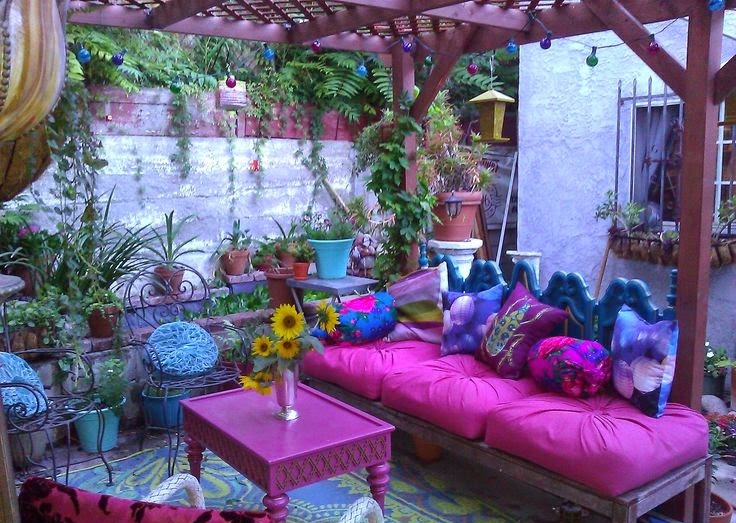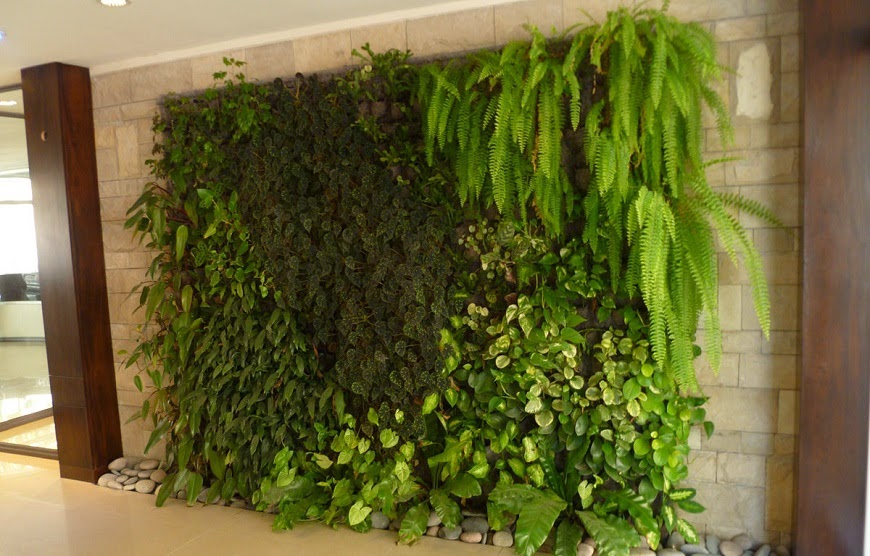An aquatic pond with plants and fish can provide many hours of enjoyable recreation, enhance the beauty of a farm, and significantly increase the property’s resale value at the bargain. However, the idea of building an aquatic fish and plant pond intimidates many people who live on land, because the project seems too imposing. It is not so, follow the following steps and start projecting yours.

How to make a water pond with plants and fish?
The truth of the matter, however, is that creating and managing your own fish pond is not really difficult at all. If you want to add one more pond to the number, the chances are pretty good that you can.
Choose the tank.
It is suggested to look for these types of tanks in farm or ranch stores, on the outskirts of town or through a mail order source. Tank assortments come in many sizes and can be circular or oval. A two-meter-deep tank is recommended if you are going to grow water lilies and have fish.
Trace the area where you want your water pond.
Plot an area a few feet larger than the size of your aquatic tank, and excavate the grass or groundcover about three inches. Using a crushed granite base or a paved base and a level, establish a flat and stable base, tamping smoothly and leveling, to place your tank. It will be very heavy when filled with water, and you want to make sure that it will not sink on one side over time, or that the water level in the pond will tilt.
Fill the pond with water.
When the tank is in place, fill it with clean water from a hose or, better, if you have it, with stored rainwater. If using tap water from the hose, leave the water in the tank for three to four days before planting or introducing fish so that the chlorine in the water has time to evaporate. Once you have placed fish or other animals in the pond, you will need to be careful how you add water to make up for the evaporation:
- To fill small tanks, use rainwater or use a bucket of tap water that has had time to remove the chlorine.
- For larger tanks, it can be refilled from the water in the hose if it is only an inch or two, the volume of water in a large tank negates the effects of the added chlorine, as long as it is not too much.
Choose aquatic plants.
You’ll want to choose at least three types of plants for your new pond: oxygenators (submerged plants), fringe (plants at the water’s edge), and deep-water aquatic plants (plants that sit on the bottom and have leaves on the surface, such as water lilies). Water Lilies can be cute and all you want, but hard-working oxygenators are very important in maintaining a natural balance in the water, keeping algae on shore and producing oxygen for the fish. I like to use anacharis, pictured above. The nursery will sell them in small packages wrapped in wet newspaper.
As soon as you get home, put the plants in a bucket of water or plant them in the pond. You will need a few old plastic pots filled with clean gravel. It doesn’t matter if the pots have holes in the bottom.
Take a bunch of your oxygenating plants and carefully insert the bottom of an inch or so of the stems, into the gravel (pebbles) of the pot. The stems are fragile, so making a small hole in the ground with your fingers is the right thing to do, place the stems in the hole, and then gravel (pebbles) around it.
Here’s a bunch already in the pot. Even Anacharis doesn’t have to be potted, but doing so helps protect it from being eaten by fish. Fish can eat it over time, in fact. When that happens, just buy some more.
Put the oxygenating plant in a pot at the bottom of the tank, and that’s it. In this example, six packs of anacharis were purchased for my large stock-tank-pond and three pots were filled with them. You may need more, but wait to see if these grow fast enough to keep the tank clean.
Build platforms for your fringe plants.
Next, you will have to build some platforms for your fringe plants. I use everything that is at hand: stacked bricks, overturned flowerpots, and cinder blocks.
Cement blocks with holes in the center have the added advantage of giving fish a place to hide from predators such as raccoons and herons.
These are three marginal plants: Dwarf papyrus (brought from my old pond), below the Black Marble and followed by the Pond Lily.
Last but not least, the attention grabber of any pond: Water Lilies . Deep-sea aquatic plants like these shade the water with their large, spreading leaves, helping to keep the pond cool, and covering the fish, and blocking the sunlight that the algae feed on. This is a ‘helvola’, a yellow dwarf.
This is a medium to large Colorado Lily. When buying water lilies for your pond, be sure to write down the size of the mature ones. Larger ponds may be able to support two or three larger lilies.
Fertilizer for aquatic plants.
Water Lilies should be placed at the bottom of the tank, and their leaves can reach the surface. If the leaves are not that long, set the pot on some bricks to lift it. As it grows, remove the bricks and lower the pot to the bottom of the pond. Once a month during the growing season (March or April to October in Austin), place a fertilizer tablet with your finger driving deep into the soil of the pot with the lily. Do not let the tablet dissolve in water, or contribute to algae blooms.
Be hospitable to the fauna of the place.
With their steep sides and lack of natural shelving, water ponds have the advantage of being difficult for raccoons, dogs and cats (and young children) to enter. But it’s good to make your pond hospitable to birds, insects, and other small animals that might want to drink or take a bath, or who fell in and need a way out. You can put a stone platform that serves as a toilet on top of a cinder block next to the edge of the tank. It gives birds and insects easy access to the water, and you can enjoy watching them at ease in the pond, too.
Fish for aquatic pond.
In fish, a gambusia or a goldfish are good options to give color and life to the pond, and to eat mosquito larvae. In fact, you may never feed your goldfish, letting them forage with mosquito larvae, algae, insects, and anacharis at the bottom of the pond. Check with your supplier to find out how many fish your pond size can handle. If you don’t want fish, you will have to rely on mosquito killers to avoid larvae in the water.
A filter pump can be a nice addition to your pond, especially if you want the sound of moving water. However, water filter, mosquito control, or healthy plants may not be entirely necessary. The pump may, however, be necessary if you have goldfish and your pond is in full sun and the surface water heats up in the summer.
The Goldfish prefer cold water, and a pump will help keep the water at a constant temperature by circulating water cooler background. The Gambusia (native mosquito fish), although not as colorful as goldfish, are more resistant and do not mind the warm water pond, therefore, a bomb is not a necessity for them. As for keeping the water clean and healthy, a filtration pump is not necessary. What matters is having an adequate amount of water plants, shading plants on the surface, and not overfilling your pond with fish.
Maintenance.
The only maintenance that is needed is to remove fallen leaves from time to time, fertilize once a month during the growing season, clean the bottom once a year, and divide the plants once a year. Expect a pond algae bloom, it will turn green, shortly after you plant your pond and maybe every spring when the water warms up.
However, by keeping the pond full of oxygenating plants, and being patient until the water lily leaves are ready to shade the surface, you will find that the water cleans itself without the need for any chemicals. Just as nature does.








